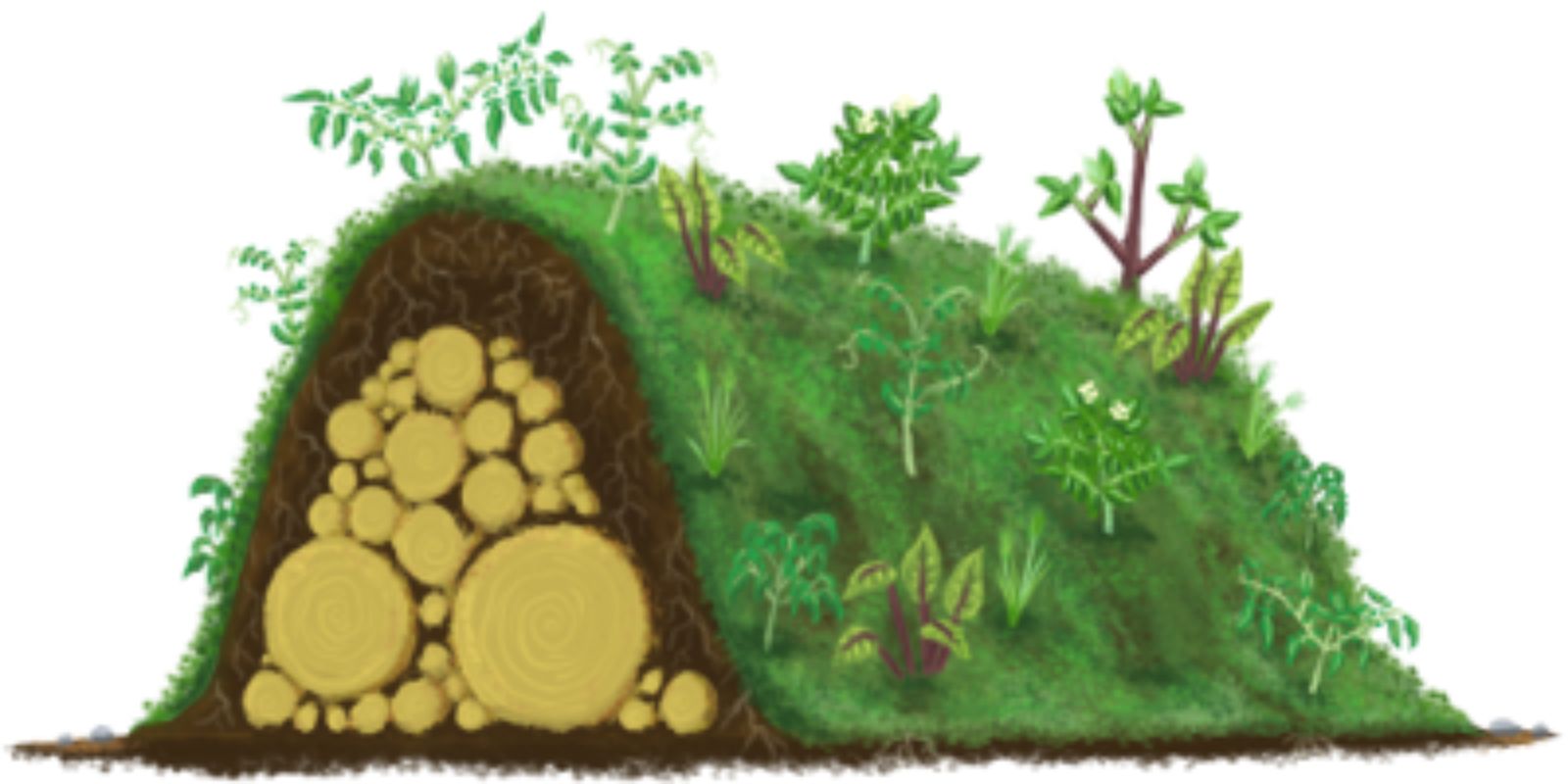Introduction:
Hugelkultur, a gardening technique rooted in permaculture, has gained popularity for its sustainable practices and ability to improve soil health. The word “hugelkultur” comes from the German words “hügel” (hill) and “kultur” (culture), which aptly describes this method of creating raised beds filled with decomposing wood and organic matter. Not only does hugelkultur enhance soil fertility, but it also helps with water retention and can promote thriving plant growth. In this comprehensive guide, we’ll explore how to build hugelkultur beds, their benefits, and tips for maximizing your garden’s potential.
Understanding Hugelkultur
Before diving into the construction process, it’s essential to understand the principles behind hugelkultur. The technique mimics natural forest floors, where fallen logs and organic matter break down over time, enriching the soil. As the wood decomposes, it releases nutrients, improves soil structure, and retains moisture, reducing the need for frequent watering.
Benefits of Hugelkultur
- Enhanced Soil Fertility: The decomposing wood and organic matter enrich the soil with essential nutrients, providing a continuous supply as the materials break down.
- Water Retention: Hugelkultur beds can hold moisture more effectively than traditional soil, reducing the need for irrigation, especially in arid climates.
- Soil Aeration: The air pockets created by the decomposing wood improve soil aeration, promoting root health and growth.
- Waste Reduction: Utilizing fallen trees, branches, and kitchen scraps means less waste in landfills, making hugelkultur an eco-friendly gardening method.
- Long-lasting Beds: Once established, hugelkultur beds can last for years, requiring minimal maintenance and replenishment.
How to Build Hugelkultur Beds
Step 1: Choose a Location
The first step in creating hugelkultur beds is to select the right location. Look for a sunny spot in your garden that receives at least 6-8 hours of sunlight daily. Ensure good drainage to prevent waterlogging, as this can lead to root rot and other issues.
Step 2: Gather Materials
Collect a variety of materials to create your hugelkultur bed. The primary components include:
- Logs and Branches: Start with larger logs as the base. The size can vary, but logs around 2-6 inches in diameter work well. Smaller branches and twigs can be added on top.
- Organic Matter: Gather leaves, grass clippings, kitchen scraps, and other organic materials. This will fill the gaps and provide additional nutrients.
- Soil: Use rich garden soil or compost to cover the organic materials.
Step 3: Create a Base Layer
Begin building your hugelkultur bed by laying down the largest logs horizontally in a mound shape. This forms the foundation of your bed. Depending on the space available, you can create a long, low mound or a taller, more pronounced hill. Ensure the logs are stable and securely positioned.
Step 4: Add Smaller Materials
On top of the logs, layer smaller branches, twigs, and organic matter. This can include straw, leaves, and kitchen scraps. As you add these materials, try to create a varied texture to allow for air pockets, which will aid in decomposition.
Step 5: Top with Soil
After layering the organic materials, add a generous layer of rich soil or compost. Aim for at least 6-12 inches of soil on top of the organic matter. This layer will provide a planting medium for your seeds or seedlings.
Step 6: Water the Bed
Thoroughly water the hugelkultur bed after building it. This initial soaking helps settle the materials and kickstarts the decomposition process. The moisture will also be crucial as the plants begin to establish themselves.
Step 7: Plant Your Seeds or Seedlings
Once your hugelkultur bed is settled, it’s time to plant! Choose your favorite crops—tomatoes, peppers, herbs, or even flowers—and plant them directly into the soil. The rich, nutrient-dense environment will provide the perfect setting for growth.
Maintenance Tips for Hugelkultur Beds
While hugelkultur beds require minimal maintenance, some care will ensure they thrive:
- Monitor Moisture Levels: Although hugelkultur beds retain moisture well, check regularly, especially during dry spells. Water deeply when needed.
- Mulch: Adding a layer of mulch on top can help retain moisture, suppress weeds, and further enrich the soil as it breaks down.
- Compost Additions: Periodically add compost or additional organic matter to keep the nutrient levels high and support ongoing decomposition.
- Crop Rotation: Practice crop rotation within your hugelkultur beds to prevent soil depletion and control pests and diseases.
- Plant Diversity: Mix different plants to create a diverse ecosystem that supports beneficial insects and minimizes pest issues.
Common Mistakes to Avoid
- Choosing Poor Materials: Avoid using treated wood, as it can leach chemicals into the soil. Stick to untreated, natural materials.
- Ignoring Drainage: Ensure your hugelkultur bed is placed in a well-drained area to avoid waterlogging.
- Overwatering: While moisture is essential, too much water can hinder the decomposition process and lead to root rot.
- Underestimating Size: If space allows, consider making larger beds. The more wood you include, the better the moisture retention and nutrient availability.
Conclusion
Building hugelkultur beds is a rewarding and sustainable gardening method that can significantly enhance your garden’s productivity and health. By utilizing natural materials and mimicking forest ecosystems, you can create a thriving environment for your plants while reducing waste and conserving resources. Start your hugelkultur journey today, and watch your garden flourish!
Embrace the principles of hugelkultur, and let your gardening skills flourish as you create a more sustainable and productive garden. Happy gardening! 🌱
#Hugelkultur #SustainableGardening #EcoFriendly #GardenTips #RaisedBeds #OrganicGardening

